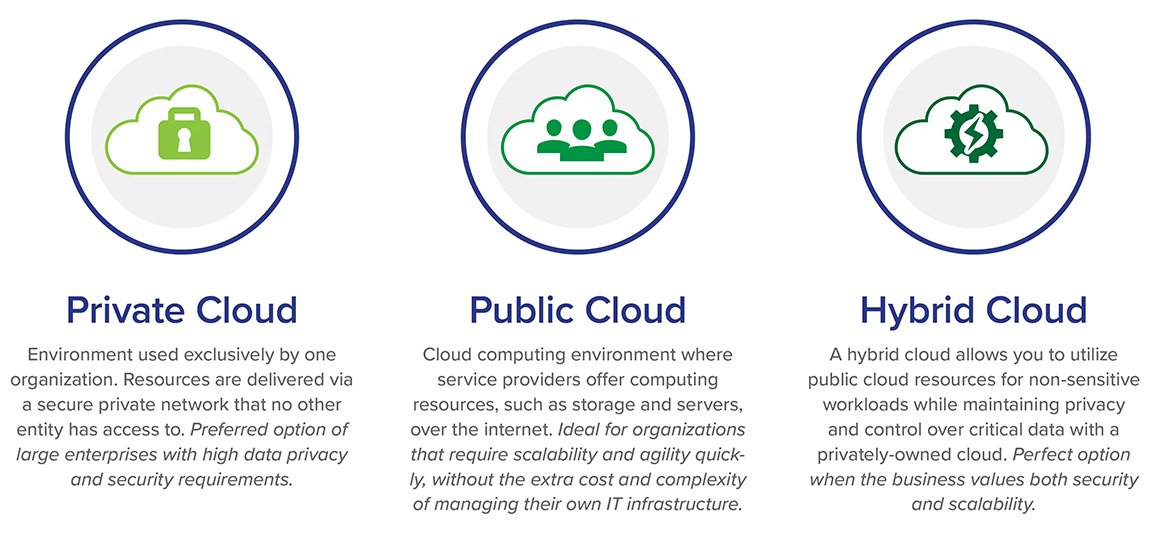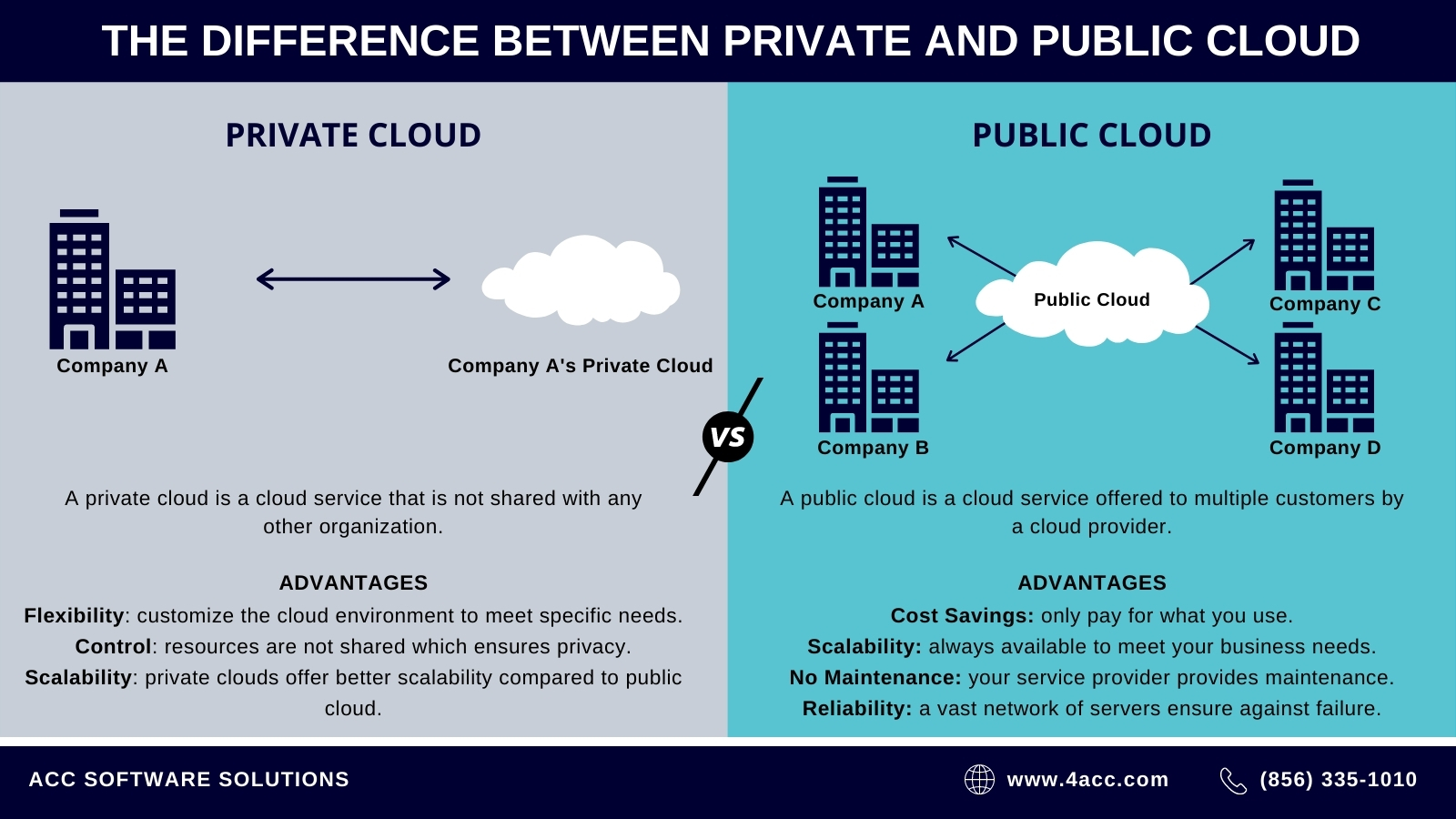
Introduction
Definition of Public Cloud
When we talk about the public cloud, envision a vast landscape where businesses and individuals can access computing resources over the internet.
- Accessibility: Services like Amazon Web Services (AWS) or Microsoft Azure are perfect examples.
- Cost-Effective: Users can pay as they go, making it ideal for startups or small enterprises.
Imagine launching a new app; with public cloud services, your resources can scale as your user base grows without hefty upfront costs.
Definition of Private Cloud
On the other hand, a private cloud offers a more tailored environment.
- Exclusive Access: This setup provides dedicated resources exclusively for one organization.
- Enhanced Control: Think of it as having a bespoke suite designed just for your company’s needs.
If a financial institution needs stringent data security, a private cloud solution would be their go-to for ensuring compliance and privacy while hosting sensitive information.
Overall, understanding these definitions lays the groundwork for diving deeper into cost considerations and the various features each cloud type offers.

Cost Considerations
Cost Structure of Public Cloud
When it comes to the public cloud, the cost structure is often based on a pay-as-you-go model. This means you only pay for the resources you actually use.
- Flexibility: Think of it as ordering a meal at a restaurant. You can choose an appetizer or a full course; it all depends on what you need at the moment.
- Lower Initial Investment: There’s no need for heavy upfront costs, making it attractive for startups.
For instance, if your app experiences a sudden surge in users, you can quickly scale resources without worrying about long-term commitments.
Cost Structure of Private Cloud
Conversely, private clouds require a different financial approach. They often involve significant upfront investments in hardware and a more predictable ongoing expense for maintenance.
- Fixed Costs: Organizations may invest in dedicated servers, storage, and network infrastructure.
- Long-Term Planning: This model is beneficial for businesses with stable workloads and a focus on compliance and security.
Picture a bakery investing in their own ovens and mixers—while the initial cost is high, it allows for greater customization in the long run. Choosing between public and private clouds ultimately hinges on understanding these cost implications and aligning them with your business goals.

Security and Compliance
Security Measures in Public Cloud
When considering public cloud security, it’s essential to know that providers implement robust measures to protect data.
- Data Encryption: Most public cloud services encrypt data both at rest and in transit, adding a crucial layer of security.
- Regular Audits: Many offer third-party audits to verify compliance with industry standards.
For instance, if you’re a small business using a service like Google Cloud, they continuously monitor for threats while providing extensive documentation on securing your data.
Security Measures in Private Cloud
In contrast, private clouds often leverage heightened security protocols tailored to specific organizational needs.
- Dedicated Firewalls: These create a barrier between the internal network and external threats.
- In-House Control: Companies have full control over their security measures, allowing for stricter compliance.
Think of a financial institution storing customer data; a private cloud ensures they can implement and monitor bespoke security protocols to meet regulations. Ultimately, both options offer distinct advantages, yet understanding their security landscapes is crucial for making the right choice for your organization.
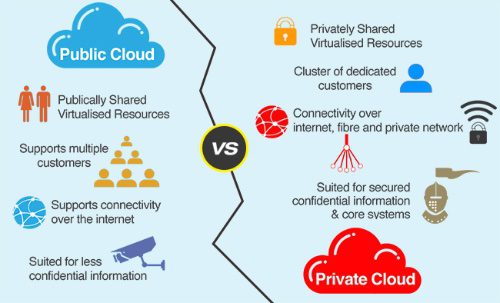
Scalability and Flexibility
Scalability Features of Public Cloud
Scalability is one of the standout features of public cloud services, offering businesses the ability to grow without limitations.
- Elastic Resources: Users can instantly scale resources up or down based on demand—perfect for e-commerce businesses during holiday sales.
- Global Reach: With data centers located around the world, businesses can expand their services quickly, adapting to new markets effortlessly.
Imagine launching a mobile game that goes viral overnight; public cloud platforms can handle that spike in users without breaking a sweat.
Scalability Features of Private Cloud
On the other hand, private clouds present scalability options, albeit with a few different characteristics.
- Controlled Growth: While you can scale your resources, it often requires planning and infrastructure investment.
- Customization: Tailoring resources specifically to your organization’s needs allows for targeted performance improvements.
For example, a manufacturing company might invest gradually in its private cloud infrastructure as production demands increase. Both cloud types offer scalability, yet understanding their unique benefits helps businesses formulate the best strategy for growth without compromising flexibility.
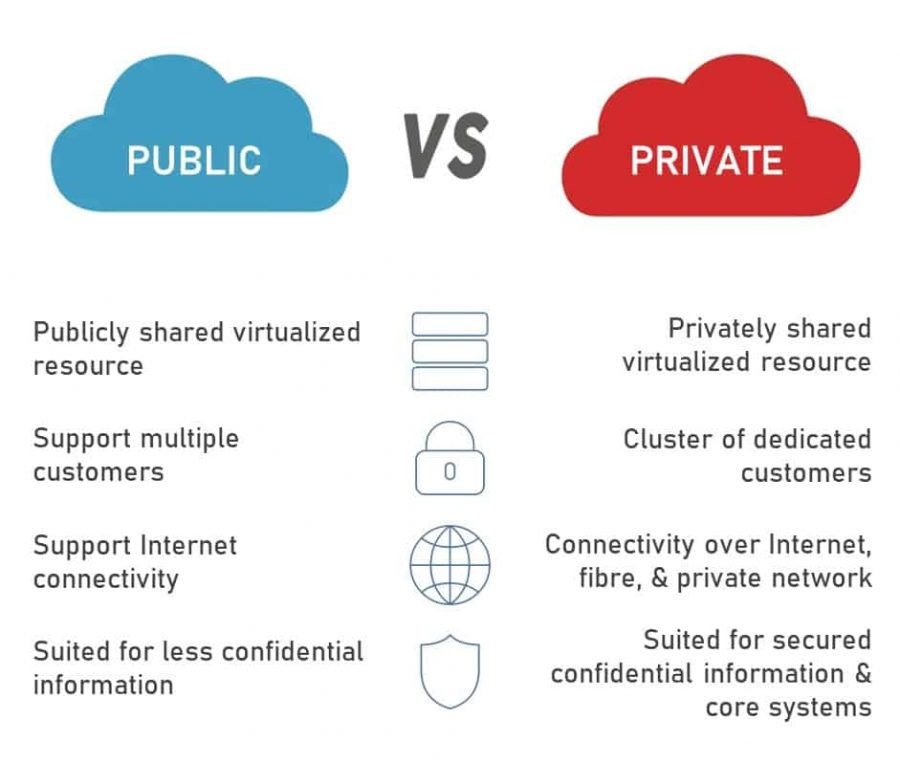
Performance and Reliability
Performance Factors in Public Cloud
In the public cloud realm, performance is largely driven by the provider’s infrastructure and resource sharing among users.
- High Availability: Leading platforms like AWS and Azure boast extensive server networks that ensure minimal downtime.
- Load Balancing: They use sophisticated load balancing to distribute traffic effectively, preventing any single server from becoming overwhelmed.
Think about a video streaming service during peak hours—public clouds can efficiently manage millions of requests simultaneously, keeping users happy.
Performance Factors in Private Cloud
Meanwhile, private clouds often excel in performance by providing dedicated resources tailored to specific workloads.
- Consistent Performance: With no resource-sharing, organizations experience predictable and consistent performance.
- Customization: Businesses can optimize their private cloud setup to suit their specific applications and performance needs.
For instance, a healthcare provider may tailor their infrastructure for critical applications requiring fast response times and reliability. Both cloud models offer distinct advantages, but understanding these performance factors helps organizations choose the best path for their operational needs.

Customization and Control
Level of Customization in Public Cloud
When it comes to public cloud services, the level of customization can be somewhat limited by the standard offerings provided by the platform.
- Pre-Configured Options: Users often choose from a set of configurations rather than building from scratch, which can be efficient for less complex needs.
- Marketplace Solutions: Many public cloud providers offer integrations and applications through their marketplaces, allowing some level of tailored functionality.
For example, a small business might deploy an e-commerce platform using predefined tools, finding it fast and effective without needing extensive customization.
Level of Control in Private Cloud
In contrast, private clouds offer a much higher degree of control to organizations.
- Tailored Environments: Companies can design their infrastructure to meet specific regulatory, operational, or performance requirements.
- Resource Management: With dedicated resources, businesses can dictate how and when to allocate them, leading to more efficient resource utilization.
Consider a large healthcare provider that needs to comply with strict regulations; a private cloud allows them to customize every aspect of their environment. Balancing customization and control is crucial, as understanding these factors will guide businesses in selecting the cloud solution best suited for their unique needs.

Use Cases and Scenarios
When to Choose Public Cloud
Choosing the public cloud often makes sense for businesses that require flexibility, scalability, and reduced costs.
- Startups and Small Enterprises: They benefit from the pay-as-you-go model, avoiding heavy upfront investments.
- Variable Workloads: Ideal for businesses with fluctuating demands, like seasonal online retailers during holiday sales.
Imagine a tech startup launching a new app; leveraging public cloud resources ensures they can adjust capacity as user adoption grows without financial strain.
When to Choose Private Cloud
Conversely, a private cloud is better suited for organizations necessitating enhanced security, compliance, and control over their IT environments.
- Regulated Industries: Sectors like healthcare and finance greatly benefit, as they often impose strict data privacy standards.
- Customization Needs: If a business has specific applications requiring unique infrastructure, a private cloud allows complete tailoring.
For example, a financial services firm needing to protect sensitive client information will likely prefer a private cloud setup, ensuring compliance and custom security features. Analyzing these scenarios helps organizations make informed decisions about which cloud solution aligns best with their operational requirements.
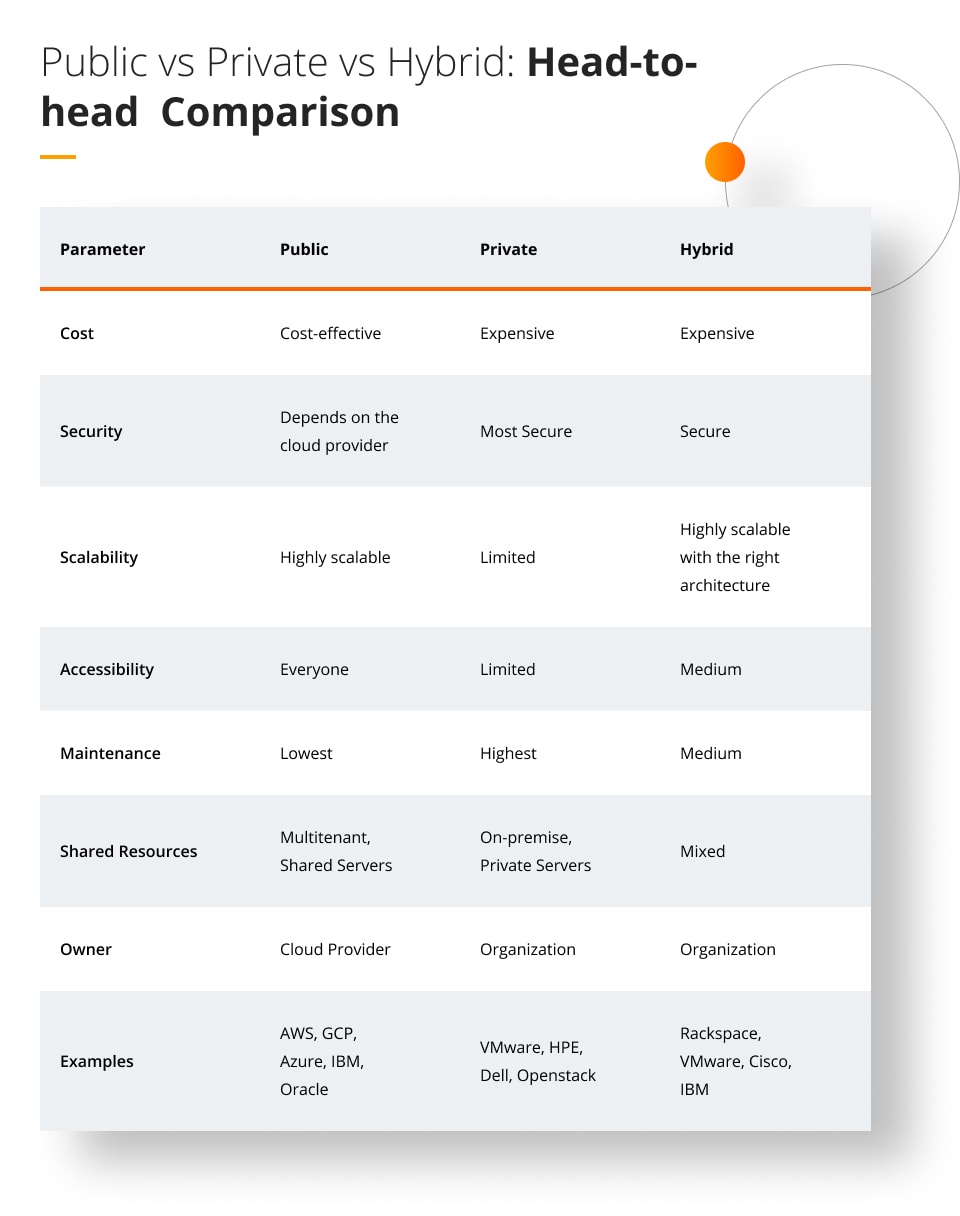
Hybrid Cloud Solutions
Overview of Hybrid Cloud
As organizations increasingly look for flexible solutions, hybrid cloud technology has emerged as a remarkable blend of both public and private clouds.
- Integrated Approach: This model allows businesses to store sensitive data on private clouds while leveraging public clouds for additional resources.
- Seamless Connectivity: Hybrid cloud solutions enable organizations to connect on-premises infrastructure with cloud services effectively, ensuring smooth data flows.
Think of it as having the best of both worlds, where companies can adjust their cloud strategy to suit dynamic needs.
Benefits of Hybrid Cloud
The advantages of hybrid cloud solutions are compelling for many businesses exploring their options.
- Flexibility: Organizations can move workloads between environments based on demand or cost considerations, optimizing resource utilization.
- Cost Efficiency: By combining both models, companies can minimize costs while harnessing the robust capabilities of large cloud providers without sacrificing data control.
For example, an e-commerce company could run its web application in the public cloud while keeping payment processing in a private cloud for security. The hybrid cloud approach provides a tailored solution that aligns with evolving business needs, balancing performance, security, and cost-effectiveness.
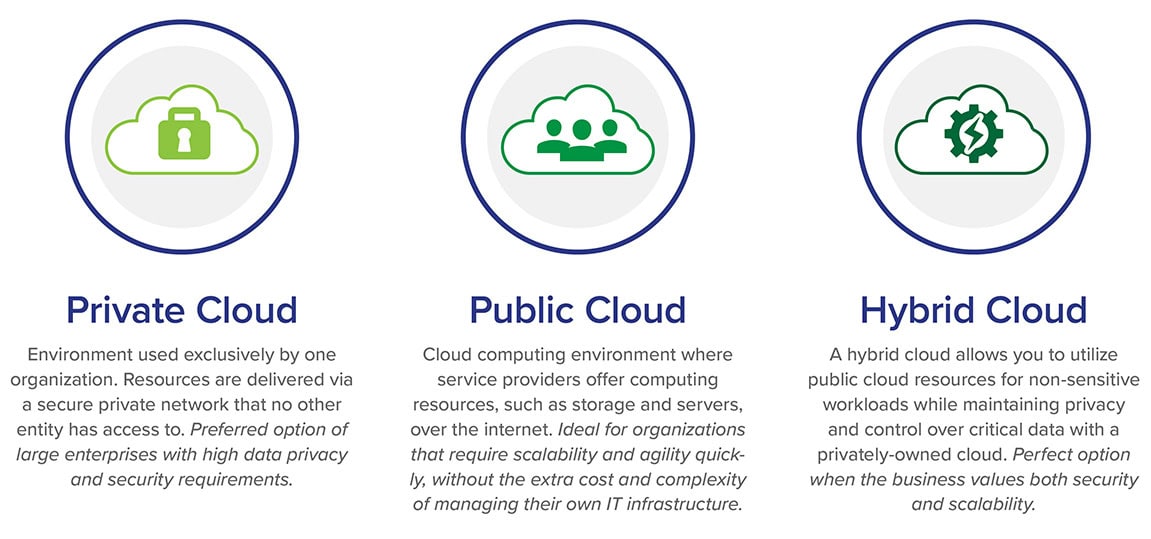
Migration and Integration
Challenges in Public Cloud Migration
Migrating to the public cloud can be exciting but comes with its fair share of challenges.
- Data Security Concerns: Organizations worry about data breaches during the migration process, especially with sensitive information.
- Compatibility Issues: Legacy applications may not easily integrate with cloud platforms, leading to potential downtime.
For instance, if a company tries to move their on-premises database to a public cloud service without proper planning, they might face significant disruptions that could impact their operations.
Challenges in Private Cloud Integration
On the flip side, integrating private clouds can also be tricky.
- Resource Management Complexity: Maintaining control over physical and virtual resources can become cumbersome, particularly as workloads change.
- Higher Initial Costs: Setting up a private cloud often involves larger capital expenditures on infrastructure and ongoing maintenance.
Consider a large enterprise working to integrate its private cloud with existing IT infrastructure; the process may entail a complex orchestration of systems that can take time to align. Recognizing these challenges allows organizations to plan strategically for smoother transitions, whether migrating to a public cloud or integrating a private one, ensuring that they are well-prepared for the journey ahead.

Decision-Making Factors
Factors to Consider for Choosing Public Cloud
When contemplating a switch to the public cloud, several critical factors should guide your decision-making process.
- Cost-Effectiveness: Evaluate your budget and consider whether a pay-as-you-go model aligns with your financial strategies.
- Scalability Needs: If your business is likely to grow or experience fluctuating demands, the public cloud provides an excellent scalable environment.
For instance, a startup planning to launch a new app must think about how quickly they can scale resources to accommodate a growing user base.
Factors to Consider for Choosing Private Cloud
Alternatively, when considering a private cloud, focus on elements that emphasize control and compliance.
- Regulatory Compliance: Organizations in regulated industries require strict adherence to data privacy laws, making a private cloud a safer choice.
- Customization Requirements: If you have unique workloads that necessitate tailored solutions, a private cloud can be configured to meet those specific needs.
Imagine a healthcare provider needing to ensure patient data privacy; a private cloud infrastructure allows for the necessary customization in security measures. Ultimately, recognizing these decision-making factors helps businesses choose the cloud solution that best aligns with their operational objectives and industry requirements.
